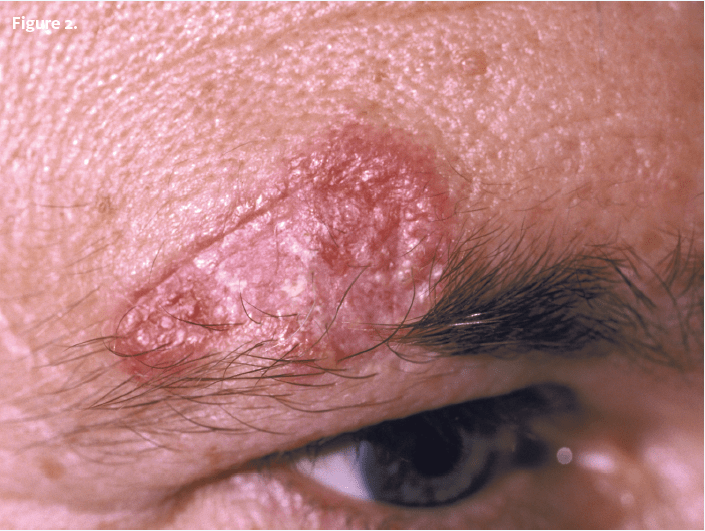Published on
Differential Diagnosis
- Tinea corporis
- Lichen planus
- Discoid lupus erythematosus
- Sarcoidosis
- Basal cell carcinoma

Diagnosis
This patient was diagnosed with discoid lupus erythematosus (DLE), a disfiguring autoimmune skin disease and the most common form of chronic cutaneous lupus erythematosus.
Learnings/What to Look for
- DLE has a characteristic clinical appearance consisting of red, scaly plaques with resulting pigmentary changes and scars; the plaques are frequently found on the face and scalp
- Discoid rash is one of the 11 diagnostic criteria for systemic lupus erythematosus (SLE); 20% of patients with SLE will manifest discoid lesions. However, only 5% to 10% of patients with DLE demonstrate systemic involvement or will go on to develop SLE
- DLE most commonly afflicts women in the third and fourth decades of life, although it may occur at any age and in either gender
- Individuals of African and Hispanic descent are at increased risk, and there may be a positive family history of lupus or connective tissue disease
Pearls for Urgent Care Management and Considerations for Transfer
Patients with DLE should be counseled to employ sun-protection measures such as sunscreen, photoprotective clothing, brimmed hats, and avoiding exposure to the sun during peak hours
- Topical retinoids have been reported to be helpful
- Rarely, squamous cell carcinomamay rarely develop in chronic DLE scars, especially in sun-exposed areas
Acknowledgment: Images and case courtesy of VisualDx (www.VisualDx.com/JUCM).
A 37-Year-Old Male with an ‘Itchy’ Lesion on his Face
1 2
